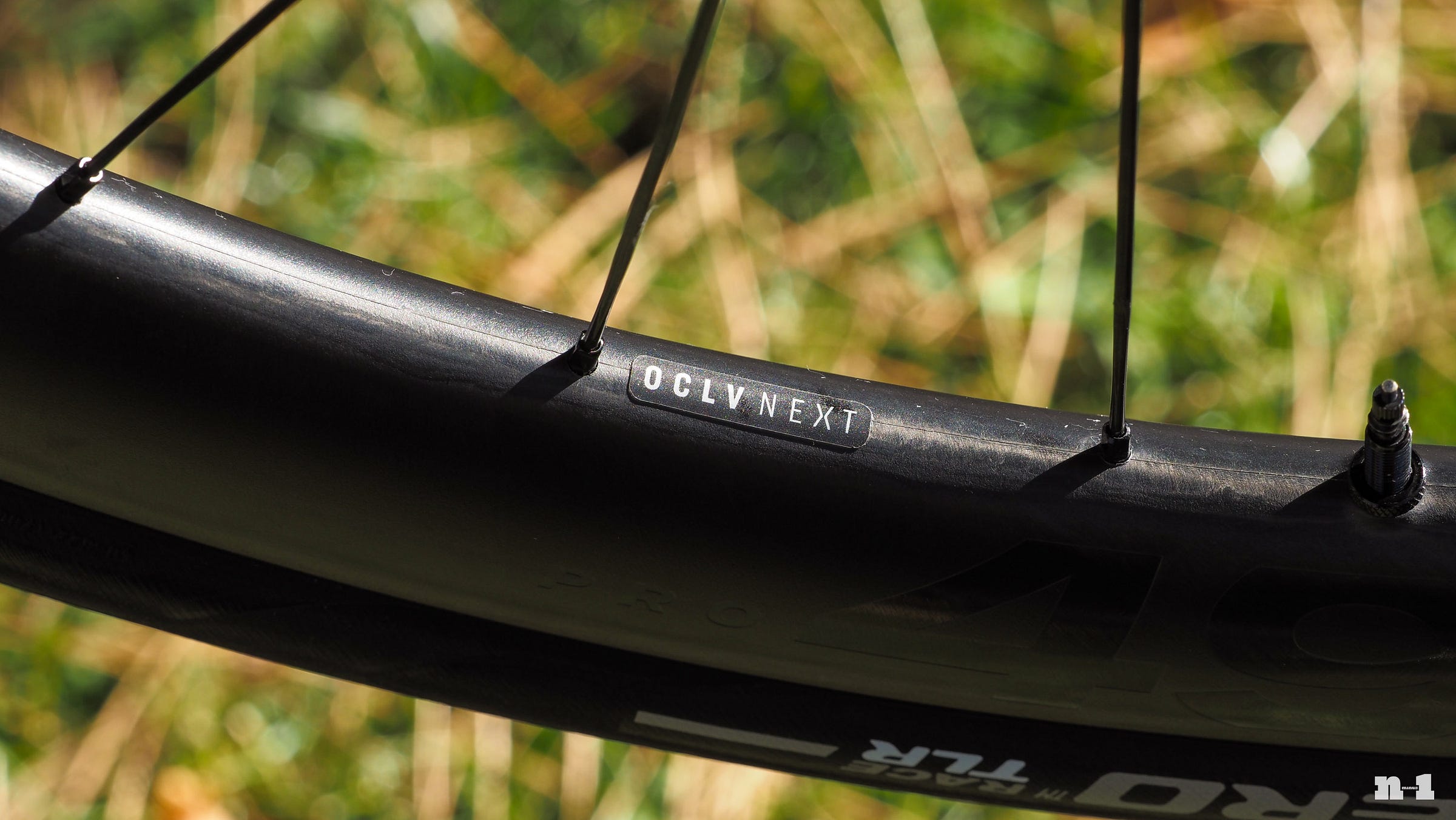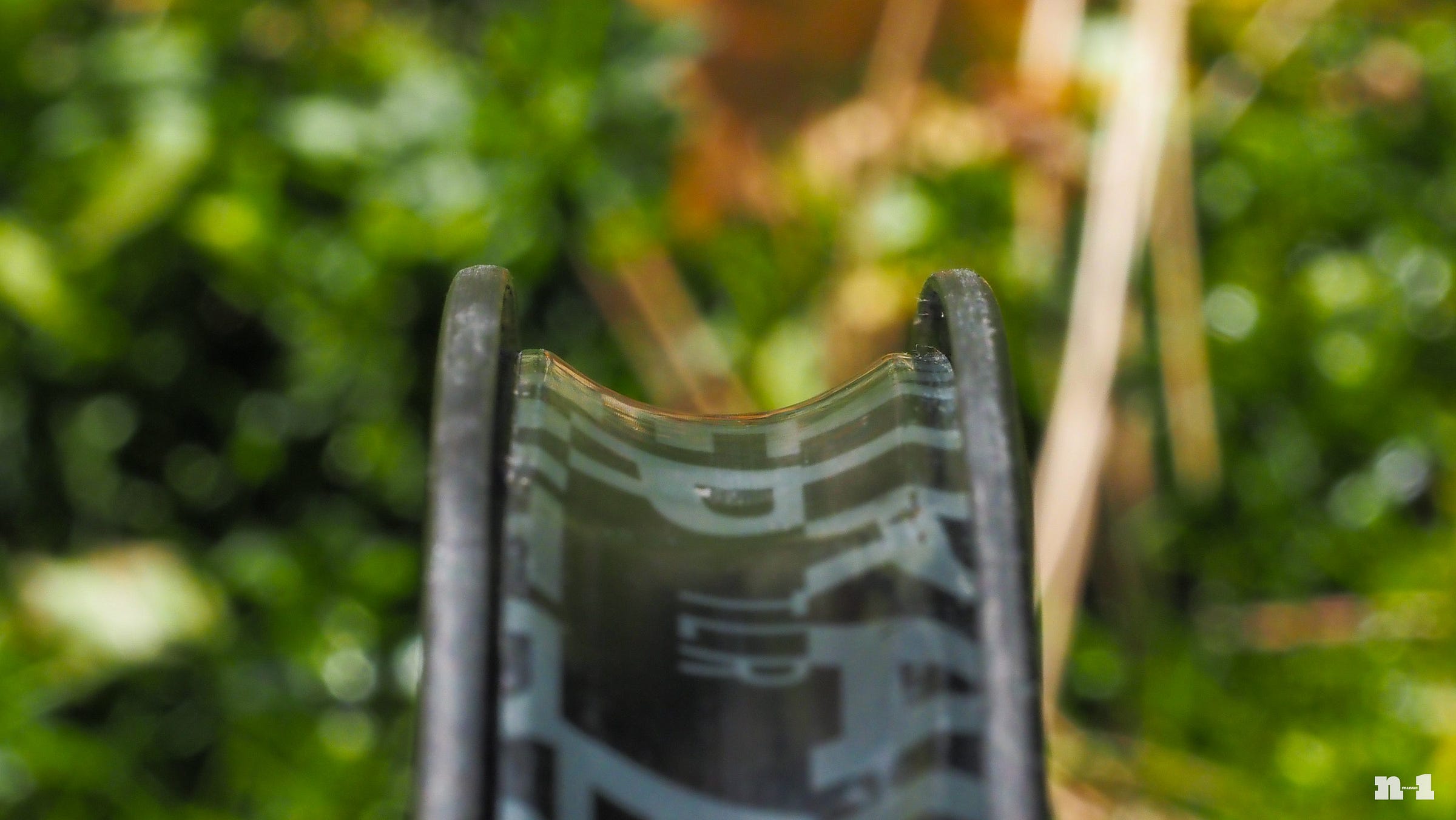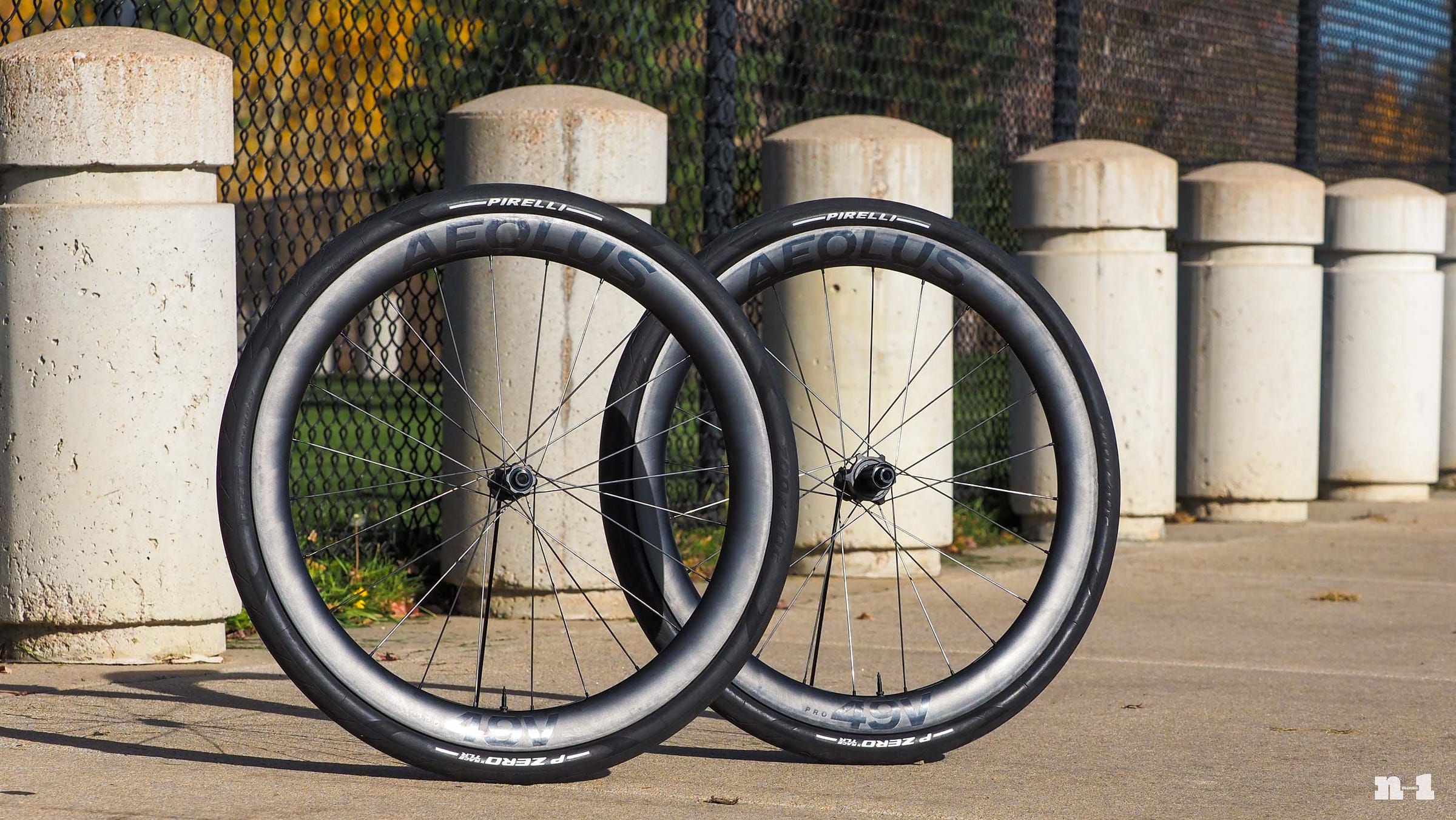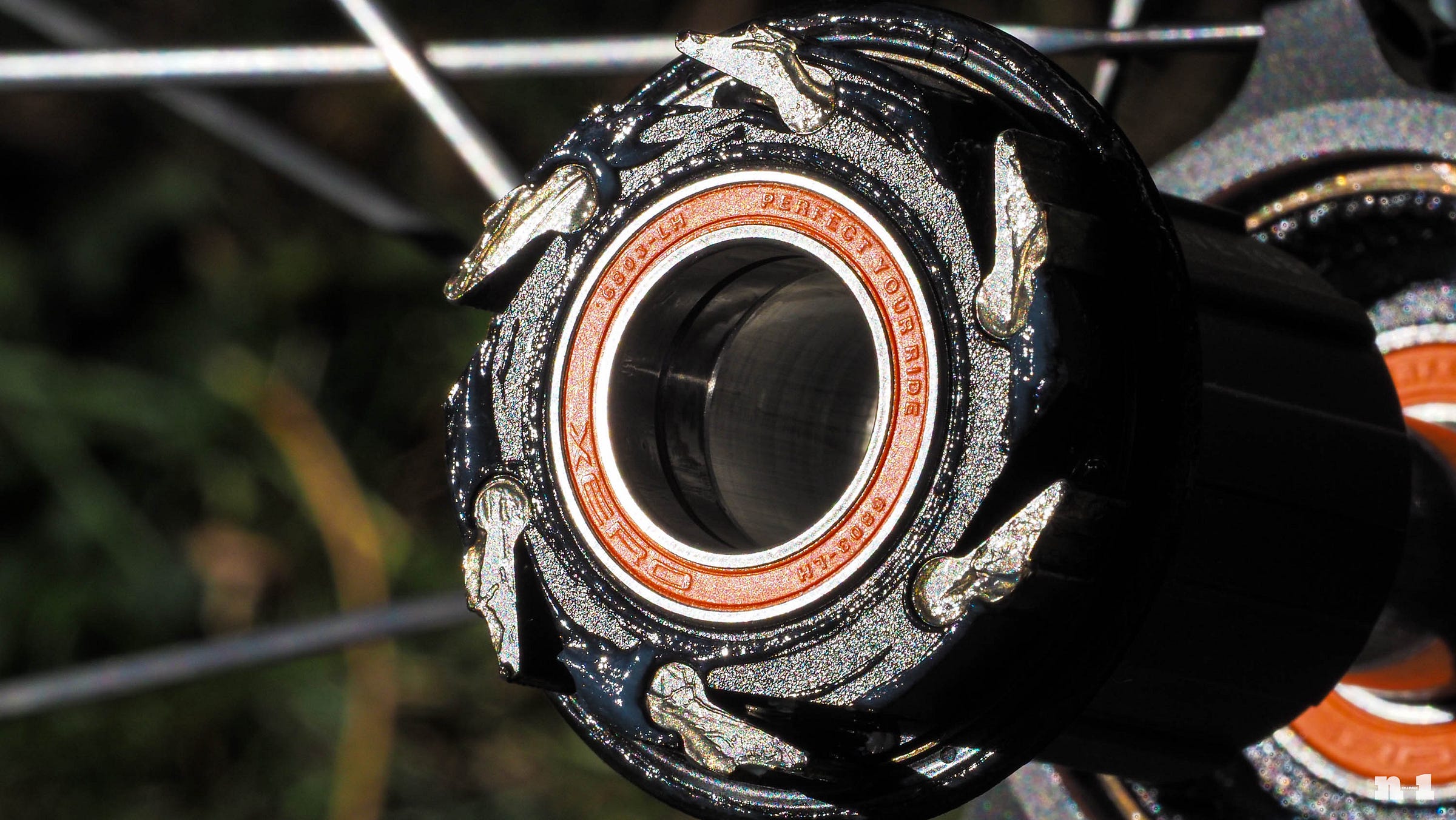Bontrager Aeolus Pro 49V wheelset review
Good-performing wheels with cutting-edge composite technology, but questionable QC and maybe not the best platform for the material.
Bontrager’s Aeolus Pro 49V wheels (and the similar, but shallower, 37V model) mark the first time the brand has ventured outside of traditional thermoset composite technology for a carbon fiber wheelset. Instead, the thermoplastic construction is claimed to “help dampen vibrations for a smoother, faster ride,” while also boasting eco-friendly benefits like a drastically reduced resource footprint during the manufacturing process and the potential for complete recyclability.
The wheels themselves are pretty good. They look great, they’re decently light, they sport a modern shape, they offer a nice (though unspectacular) ride quality, and they’re fairly priced with great after-sales support. So why am I just not that excited about them?
Pros: Very good overall performance, versatile rim shape, reasonably competitive weight, decent value, elegant and understated aesthetics, excellent post-sales support – and hooks!
Cons: Questionable rim and build quality, maybe not the best application for thermoplastic material, doesn’t really stand out from the competition, recyclable only in theory.
The takeaway: A good choice from a reputable mainstream brand (if they can get the quality under control), but one that faces increasingly stiff competition.
Plastic fantastic
Heard of thermoplastics? If you stay up to date on higher-end bikes and gear, you probably have. But if not, here’s a quick primer.
The proper term for what we commonly refer to as “carbon fiber” is carbon fiber-reinforced plastic, or CFRP (so the next time someone pokes fun at your “plastic” bike, they’re not exactly wrong – sorry). It’s a two-part composite material where carbon fibers are held together in a plastic matrix. The fibers provide structural rigidity and strength, but since they’re so comparatively flexible, the matrix is there to hold them all together so they can properly do their job. In the case of carbon fiber bikes and components, that matrix almost always starts out as some kind of liquid polymer: basically a soup of long-chain molecules.
In a thermoset matrix, those polymeric chains will form chemical bonds with each other as the material is heated and cured, thus permanently locking the carbon fiber strands in place. Re-heating the matrix might soften the material to some degree (which is why so many early rim-brake road wheels would fail on long descents when they got hot), but once cross-linked, those polymers are stuck together forever.
In a thermoplastic, those polymers are more tangled up with each other post-curing. They’re still locked together, only physically instead of chemically, and if you reheat the matrix back up to its melting temperature, you more or less end up with that same polymeric soup that you started with.
That ability to re-melt thermoplastics over and over again also makes them more amenable to recycling – at least in theory. Much of the required infrastructure and economies of scale just aren’t there yet, for example, and even if you could figure out how to recycle the stuff in a financially beneficial way, you still have to find an application for the material since the fibers lose much of their mechanical properties every time the donor parts are chopped up for processing.

Party tricks aside, there are several claimed benefits to thermoplastics in terms of performance. When it comes to wheels, thermoplastic rims are said to damp more vibration for a smoother ride, and because they’re less brittle than thermosets, they’re less likely to crack in an impact. They also tend to be a little heavier and less rigid, but the weight penalty is pretty modest and if anything, a little extra flex in rims is often a good thing.
Thermoplastic composites are fairly common outside of the cycling industry, but when it comes to bicycle rims, there’s really only one game in town: CSS Composites, with its headquarters and factory in Draper, Utah. The company offers thermoplastic carbon fiber composite rims and wheels under its own brand name, Forge+Bond, but is also the contract manufacturer for Chris King, Revel, Evil, and seemingly any other brand selling such a thing. Bontrager doesn’t advertise as such, but after a bit of prodding, the company confirmed that CSS Composites makes these latest Aeolus rims, too.
As for the hubs, Bontrager didn’t say who manufactures those, but a peek at the bearings suggest it might be Taiwanese outfit Xero Wheels.
Salient features
Ok, back to the Aeolus 49V. On paper, Bontrager looks to have done everything right here.
The 49 mm depth is spot-on for what most road riders are looking for in a do-it-all aero wheelset, and the generous 33 mm external width plays nicely with road tires up to about a 30 mm printed width. The 25 mm inner rim width is also broad enough to offer good casing support for high-volume gravel tires, and between the lifetime warranty, included two-year “Carbon Care” no-questions-asked crash replacement policy, and the lack of any rider weight limit, Bontrager is clearly suggesting these can handle a fair bit of abuse.

Nevertheless, they’re still decently light, helped in part by the reasonable 467 g rim weight (claimed), wispy DT Swiss Aerolite spoke and aluminum nipples (just 24 per wheel), and Bontrager’s own fast-engaging Rapid Drive 108 aluminum hubs (3.3°!). Bontrager achieves that speedy engagement using a 54-tooth steel ratchet ring matched to six individually sprung pawls in the freehub body that are arranged in two offset trios. This mimics a 108-tooth ratchet ring without having to resort to ultra-fine teeth (which aren’t great for durability) or an extra-large ratchet mechanism (which would be heavy), and the pawls also have two teeth each to further increase surface contact area.
Hot tip: if you’d rather trade the fast engagement for lower friction while coasting as well as quieter running (the Rapid Drive 108 is a little buzzy-sounding as is), you can just remove one set of pawls. In fact, that’s exactly what Bontrager does with its Rapid Drive 54 hubs (which also means those are easily upgradeable if you have a set of those and want faster engagement).
Keep reading with a 7-day free trial
Subscribe to n-1 to keep reading this post and get 7 days of free access to the full post archives.







